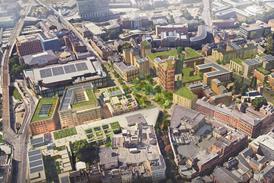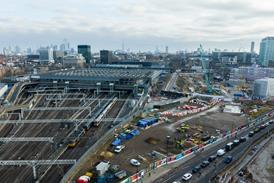Architects’ schemes singled out for praise as evidence of need to embed heritage in planning system
The London Plan must be revised to acknowledge the vital part heritage plays in the capital’s most successful developments, according to a new report.
It has been timed to influence the mayor of London as he examines how development can work according to his “good growth” mantra.
The report, by Historic England, says to have any value the “fluid term” good growth must be defined, ensuring that it is aligned with “sustainable development” – which, by contrast, is defined in the NPPF.
The report, Translating Good Growth for London’s Historic Environment, contains 15 case studies of projects which HE considers to be exemplars.
They are all developments in which historic buildings have been retained as part of a successful scheme that has delivered dividends for the local community and London as a whole. These benefits may be economic (such as new jobs or increased footfall), social (such as new homes), or environmental (such as revitalised public realm).
The scheme include King’s Cross; the new Design Museum; the conversion of Bankside Power Station into Tate Modern by Herzog & de Meuron; St Mary of Eton by Matthew Lloyd Architects; RSHP’s Deptford Market Yard; and the Old Vinyl Factory in Hillingdon where Studio Egret West, AHMM and Duggan Morris are all working.
Emily Gee, HE’s London planning director, said the report demonstrated that heritage is fundamental to achieving good growth and should inform the planning process from the outset.
She calls on the mayor to update the London Plan and other mayoral strategies to reflect the concept of good growth and the integral role that heritage management plays.
“The case studies show that heritage-led regeneration and heritage-inspired design and placemaking create successful, interesting and characterful buildings, spaces and places,” she said.
“The paper sets out the real benefits of embedding an understanding and appreciation of our historic environment in the delivery of positive change. We see this as essential, so that London’s historic places can continue to enrich the lives of Londoners and the experiences of visitors to our great city.”













No comments yet